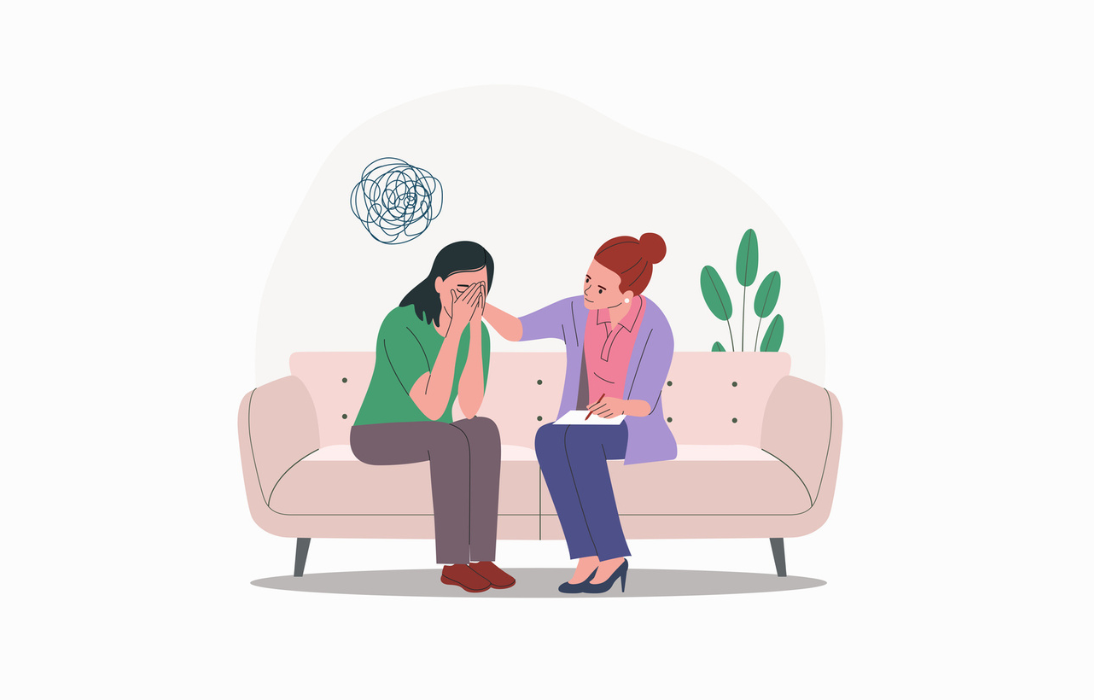Exploring Living Loss: How to Provide Support for Patients and Families

Imagine losing the ability to live your life as you currently know it, with a heart that still beats and lungs that still breathe, but your “normal” won’t ever look the same.
That’s what happened when Julie, a 39-year-old wife and mother of three, had significant complications post-COVID, which led to a bilateral lung transplant. But perhaps what was more profoundly impactful occurred during her hospitalization, where she experienced spinal cord ischemia that left her with paraplegia and little hope for being able to walk again. She was very much alive but faced a life much different than the one before her hospitalization. Instead of going on hikes and running after her kids on the playground, she would be there in a wheelchair. She would be able to watch her children grow, but not in the way she was able to before COVID and everything that resulted afterward. Julie was digesting this, as was her family.
This is living loss.
What is a Living Loss?
A living loss, or a nonfinite loss, is a loss which occurs when an individual or their loved one(s) experience a negative life event (e.g., chronic disability, illness, or other life-altering event), that derails their previous expected trajectory and creates a constant clash of reality. Living losses are enduring in nature, retaining a physical and/or psychological presence in an ongoing manner. While grief is most often associated with death or dying, the experience of grief is complex and can be a part of nonfinite loss.
As humans, we experience loss in a variety of ways—loss of a relationship, loss of employment, loss of function due to illness or a loved one’s death. As clinicians, we witness this type of loss unfold daily in our work. We see it in the patient with a devastating injury who is left with lifelong debilitation, the patient with a new diagnosis or neurodegenerative disease, or the adult child becoming a full-time caregiver for their parent with Alzheimer’s disease.
It can be exhausting to navigate the continuous roller coaster of uncertainty and grief over the loss of our previous life—the life we aspired to—and the start of the new one. The impact of living loss can be very painful, and yet many struggle with finding language around expressing emotions associated with it.
Experiencing Living Loss
When someone is experiencing a living loss, there is an ongoing uncertainty about the future, most likely accompanied by fear. The life they once knew can be shattered, leaving an overwhelming feeling of vulnerability and lack of safety. Adjusting to a new way of life and being in a world with a new reality can provoke a sense of helplessness and powerlessness. The control we once felt no longer applies.
"The life one once knew can be shattered, leaving an overwhelming feeling of vulnerability and lack of safety."
Nonfinite losses are not always identified, and there is often a lack of recognition or acknowledgment of the immensity of the loss that person is feeling. This becomes evident as the person experiencing such loss begins to withdraw or isolate from social interactions, increasing the intensity of helplessness and leading to other conflicting emotions.
Adjusting to a New Reality
Individuals may find themselves continuously adjusting to their new reality. To the outsider, nonfinite losses are very difficult to understand and may even be invisible. And unfortunately, as a society, we have been taught to minimize or dismiss them, leaving the grief someone may carry to go unnoticed. We may even see an individual’s close support system grow weary. They may want to be supportive and encourage the individual to look for the “silver lining”, without understanding or acknowledging the uniqueness of grief for each person.
The result can be chronic sorrow. While there may be no end to the distress, individuals may experience ups and downs, as is typical in grief. First coined by Olshansky (1962), chronic sorrow is often found in circumstances involving long-term caregiving. It has been defined as a set of pervasive, profound, continuing, and recurring grief responses, resulting from a loss or absence of crucial aspects of oneself (self-loss) or another living person (other loss), to whom there is a deep attachment. Chronic sorrow is believed to be felt by caregivers as they witness the discrepancy between what was once hoped for and their lived experience. It is a common experience and should be recognized as such.
A Clinician’s Role in Living Loss
This topic of living loss deserves ongoing discussion. There is a growing understanding of the importance of acknowledging grief and loss outside of death. Below is a sequential strategy clinicians may find helpful in their clinical practice or personal life. When in doubt, help your patient with these five steps, and then consult with a social worker on your interdisciplinary team.
1. Identify and validate the loss.
Without recognition or naming the loss, there can be no space for processing or healing. Remember, we may be the only individuals identifying this as a loss for patients/caregivers.
2. Normalize adjustment to the loss and time for acceptance.
Remind patients/caregivers that it may take spending time with those parts of self that remain intact to reconstruct one’s identity.
3. Name the difficulty of letting go of things that cannot be controlled.
This includes brainstorming with the patient and family to determine how to minimize stress and redefine roles.
4. Accept conflicting feelings, “both/and”.
We often try to categorize thoughts, whether black and white, right or wrong. The practice of dialectical thinking allows us to hold space for two things to be true.
5. Redefine hope.
Offer opportunities for individuals to establish what their new reality looks like.
Social workers are trained to listen objectively and can provide guidance around grief. As members of the interdisciplinary team, it is important to rely on social workers to help you, your patients, and their families navigate loss. Some losses are catastrophic, while others may feel more manageable. Whatever the loss is, it remains a loss. We all deserve the opportunity to grieve in our own way. If we can open our understanding of the range of experiences for each of us, it can allow us to provide more inclusive, compassionate care.

Be the first to read articles from the field (and beyond), access new resources, and register for upcoming events.
SubscribeEdited by Melissa Baron. Clinical review by Andrew Esch, MD, MBA.
